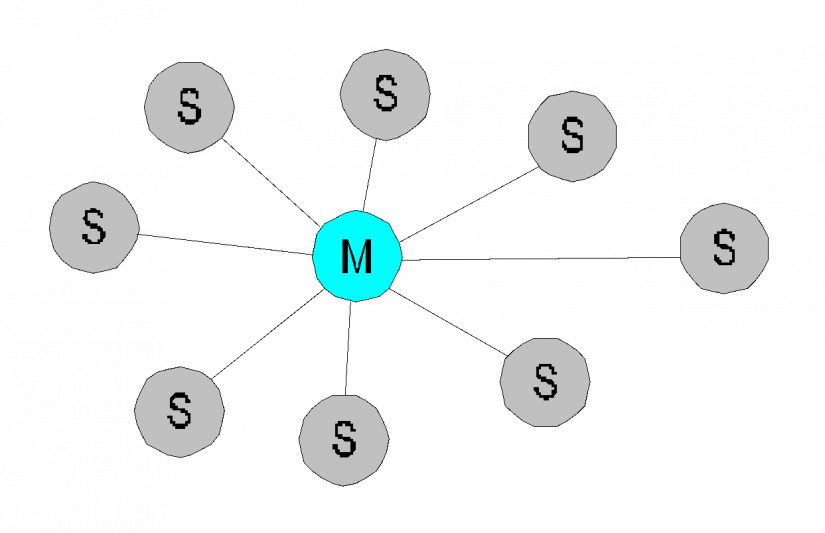The communication between the RF master and RF peripheral module is supported for star and mesh topologies.
The star topology represents a direct communication range between the master and the RF module; master always has a direct communication range with all slave RF modules.

Fig. 1. An example of star topology
The mesh topology means such placement of slaves, where the master has direct access only to some slaves, whereas other units are accessible only through the so-called routers. The router (repeater) is a device that receives an incoming RF packet, amplifies it and sends it further. By using routers it is possible to increase the master's basic communication range.

Fig. 2. An example of mesh topology
A maximum of 4 routers can be used in one mesh network. The transmitted RF packet must reach its recipient after making no more than 5 hops. Each hop represents an increase in the time lag between sending and delivering an RF packet (the reaction time between a command and an action is extended).
Either a dedicated RF router, or any RF module in continuous operation can be selected for the function of the router (this function is assigned to the module during its configuration to the RFox network).
In terms of operation of RFox network, there may be used modules in permanent operation and modules with intermittent operation.
The modules with continuous operation are always able to respond to commands from the master (they are mostly permanently powered modules).
The modules with intermittent operation go into the “sleep mode”, during which they do not respond to master's commands (they are usually battery-powered modules).
A user action (pressing the button on the module) can bring the module from the sleep mode to the active mode, or it can be activated on the basis of expiration of the timeout.
 English
English